Nine reasons why purpose holds the key to building better organisations and communities
UNFOLDING THE FUTURE with MEANING, PRESENCE, HUMANITY, WHOLENESS, SELFLESSNESS, CLARITY, LEARNING and COMMUNITY
We live in a time of rapid change and increasing uncertainty, a time when planning for a predictable future has become extremely difficult, if not impossible. It is a time when the need for directional clarity has never been greater and when our ability to prescribe a plan for the future has never been so fraught. Shorter-term and less formalised strategic blueprints, roadmaps, guidelines, agendas and statements of intent have long since replaced the notion of long-range strategic plans. And organisations (and communities) continue to look for flexible, agile and resilient operating frameworks to deal with the likelihood that even their short-term strategic agendas will continue to require radical surgery, rather than simple realignment, to deal with significant unforeseen changes in their operating environment.
Visions of the future: During the 1970s and 80s we tried to resolve the challenge of flexible planning by creating visions and missions to provide a strategic anchor – a committed view of the future that would inform and guide a flexible framework of vision-pursuit strategies. Mostly these vision statements addressed the question of ‘Who/what do we want to become?’ and allowed the supporting mission statements to focus on how we become that organisation by answering the question ‘What do we want to do?’ But many of these visions of the future turned out to be quite inaccurate or just plain wrong, and often sooner than expected. Suddenly, not only were organisations confused about who they wanted to be, they were no longer certain about their choice of what they wanted to do.
All of this confusion wasn’t really helped by a chorus of business experts arguing that achieving directional clarity was also (perhaps ultimately) about creating competitive advantage. Unfortunately, many people would interpret this emphasis on ‘strategy as a winning formula’ as arguing for financial success to be the key strategic focus, rather than positioning profitable performance as a key factor in organisational sustainability. And so vision and mission statements, no matter what words were used, were mostly crafted to rationalise the pursuit of money.
Notions of purpose: In the early 1990s the conversations about strategy and planning began to include more frequent references to the notion of purpose. A few scholarly articles and some impressive but limited research argued the case for organisational purpose as a new strategic anchor. The research showed that purpose-based organisations could substantially out perform their peers on both financial and non-financial measures. It also supported a view that organisations that engaged their stakeholders in the pursuit of a purpose beyond profit were more likely to be sustainable in the longer term. There was a growing realisation that the development of organisational strategy should be more concerned with discovering and manifesting the purpose of an organisation and less focused on maximising its long-term profitability. Perhaps there was also an increasing concern that strategic agendas focused on profitability were not necessarily creating organisational (or societal) outcomes that were beneficial for all stakeholders.
However, probably due to the difficulty and/or discomfort in confronting the question of ‘Why do we exist (if not to make a profit)?’ the shift away from profit-linked planning that typically preferences owner-stakeholders, towards purpose-based strategy that embraces a multi-stakeholder community, continues to be a slow process. In spite of an increasing recognition that organisational effectiveness is dependent on clarity of purpose, there seems to be a reluctance to let go of the old planning constructs such as vision-mission frameworks, which perversely rely on the unreliability of a predictable future.
Recently I read a LinkedIn pulse (top five) presentation on strategic planning where the author had simply redefined vision to mean purpose – overlaying new language on a tired construct! That was the jolt I needed to pen this post. It confirmed my thinking that there is considerable confusion about the nature of purpose and why it holds the key, not only to clarifying organisational direction, but also to facilitating organisational cohesion.
Purposeful planning is not just a way of reshaping traditional strategic planning frameworks; it is a new way of thinking about how organisations (and communities) can collaborate with their stakeholder communities to co-create a shared future together – a future that can unfold in the present to reflect the shared aspirations of the whole organisational community. Purpose-based planning is about creating a presence that expresses the essential truth of an organisation – its reason for being. By ‘knowing’ and embracing this ‘truth’ an organisation can hold its course in uncertain times and accommodate the impacts of unforeseen shifts in its operating environment.
Organisational purpose can be defined simply as the reason an organisation exists – its raison d’être. But, as anyone who has tried to define the true purpose of an organisation knows, purpose is not a simple construct. Its complexity – and its potential – lies in the layered meanings or understandings that make it difficult to discover and to articulate. But it is this layering which hold the key to its usefulness as a construct to help us build better organisations and communities.
The nine essential characteristics of organisational purpose, which expand its meaning and provide a helpful framework for discovery-conversations, can be briefly summarised as follows:
- Purpose unfolds the future. Purpose is not a strategic option, a simple choice between rational alternatives. It is unlikely to be defined by strategic analysis or crafted as an interpretation of an organisations strategic intent. Purpose will most likely unfold through discovery-conversations, which engage the hearts and minds of the organisational community and explore their opportunity to co-create a shared future together. Purpose is discovered not crafted.
- Purpose adds meaning. Purpose expresses the raison d’être of an organisation. Purpose answers the question ‘Why do we exist?’, not ‘Who or what do we want to become?’ or ‘What do we want to do?’. Purpose is why.
- Purpose has presence. Purpose is not about what the organisation wants to become. It is a statement about what the organisation is, what it stands for and what it believes in. In contrast to vision-mission thinking, purpose is not about the pursuit of a future state. Purpose is always true in the present.
- Purpose embraces humanity. Purpose frames a presence that embraces the humanity of the organisational community – a presence that is concerned with the longer-term wellbeing and sustainability (the wholeness) of its people. Purpose is therefore concerned with the creation of outcomes that also enhance the humanity of the society within which it operates. Purpose has a societal focus.
- Purpose seeks wholeness. Purpose expresses an expectation that the organisation cares about the wellness of its stakeholder community. Therefore it cannot be measured in dollars alone. Profitability may be important to assure the financial viability of an organisation, and to sustain its capacity to manifest its purpose, but it is not the end game. Purposeful organisations also care about the physical, social, cultural and spiritual needs of the people who comprise their organisational community. Purpose is beyond profit.
- Purpose is selfless. Purpose articulates the opportunity for an organisation to make its presence meaningful to its stakeholder community – meaning that is expressed by the co-creation of contributions that represent mutual value for all of its stakeholders. Purpose is concerned with the creation of equitable-shared value.
- Purpose provides clarity. Purpose anchors and guides the organisations strategic thinking and creates a stable platform for learning. Clarity of purpose gives organisations the strategic and operational confidence to embrace dissent, difference and diversity as learning opportunities and to successfully navigate disruptive change. Purpose enables organisations to be confident about who they are and to progressively unfold their presence in a changing world. Purpose informs strategy and sustains change.
- Purpose enables learning. Purpose inspires an organisational community by connecting and aligning individual and collective aspirations for a better future. Purpose enables organisational resilience and agility by providing a common focus for the development of meaningful community relationships – trust-based relationships that secure the flexible networks and alliances that are necessary to facilitate collaborative learning and the positive navigation of change. Purpose is inspiring and enabling.
- Purpose inspires community. Purpose engages and energises the organisational community by presenting the opportunity for them to collaborate with others to co-create a future that they feel deeply passionate about – an opportunity to be who they are within a community with a purpose they really care about. Purpose is engaging and energising.
These nine characteristics also define the nature of personal purpose, which ‘expresses the truth of who we are, our deepest understanding of why we exist and our most treasured intentions for our life’ (The Congruence Framework).
For a longer conversation about the nature of purpose and how it creates the opportunity to build better organisations and communities, please refer to my book ‘The Congruence Framework‘ and consider the conversations about ‘Shared Purpose and Ambition – Redefining purpose; Our Purpose; and My Purpose’.
Publications relevant to this post include:


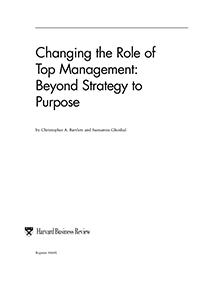
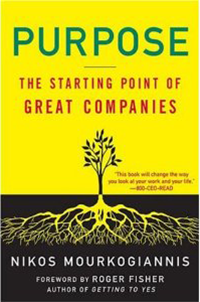
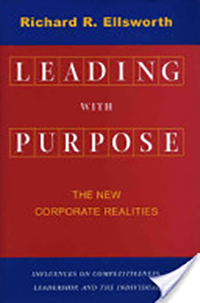
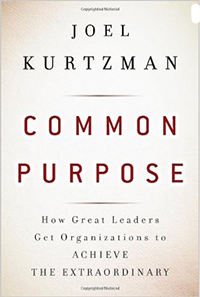
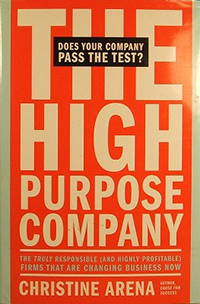

Tony, article is right on! A successful organisation understands that its sustainable growth will be dependent on identifying and articulating its purpose, and understanding, refining and focussing on its strengths. If the purpose and strengths math then an organisation inspires all parties involved; staff, clients, partners and society. This will not only benefit the organisation in terms of its commercial results but also the society and the people it serves. This should be the ultimate purpose of any organisation regardless of its tax or legal status such as for-profit or non-profit or public entity. The organisation should not exist to benefit only certain groups of people such as shareholders and officers if it wants to succeed widely for the longer-term.